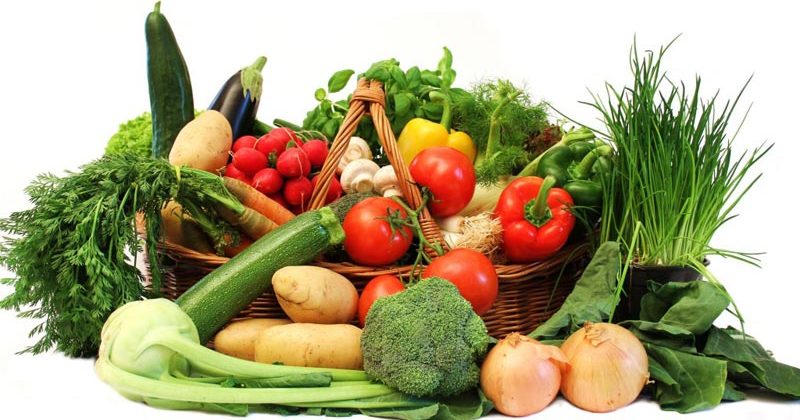
You don’t need sunlight to grow sprouts — which we explain below — but if you’re willing to spring for grow lights, you’ll be able to raise any of the other crops in this article.
That said, you can skip the grow lights altogether if you have at least one window facing south — they have the longest exposure to the sun. Windows facing east or west give you about half as much direct sunlight, and then indirect sunlight the rest of the time — keep all of this in mind when choosing what to grow.
What You Need
Now that we’ve cleared up the matter of whether you need a grow light to supplement things, here are the other supplies you’ll need so you can eventually harvest your own meals even when it’s freezing cold outside.
- Potting soil: You can buy it in a store to be on the safe side, but you can just as esaily make your own using dirt, well aged-compost and a bit of sand (for drainage); to further facilitate drainage, have a few rocks on hand to put at the bottom of the pot.
- Containers: Some of the coolest looking pot starts out as other types of containers and get repurposed; look in your recycling bin for metal cans and glass jars; even platstic soda containers and heavy canvas bags can be turned into hanging planters.
- Something to put them on: If space is at a premium in your apartment or you have young children or pets, you may want elevate your plants — like putting a shelf at window-sill level. This will also maximize the amount of time your plants are exposed to the sun.
- Seeds: Most of the produce that does well indoors tends to be vegetables and herbs; while you definitely want to grow what you’re already eating, in most cases you probably need to buy seeds rather than try to use ones from produce you’ve just consumed, even if it’s organic.
How to Grow Food Indoors
Exactly how to plant produce depends on the specific crop, but some are easier than others.
Start with one of the first two below to develop your green thumb, and then move on to more complex growing if you decide you enjoy indoor gardening.
Sprouts
You’ll achieve the fastest harvest by growing sprouts — as soon as three days afer planting, you’ve got something ready to eat.
Many vegetable seeds can be grown into sprouts — as many as 60 different varieties of legumes, grains and even a few greens can be germinated into sprouts.
All it takes is moisure — you don’t even need to worry about sunlight — although there are some nuances to different seed strains. You can learn more about them at the website called what else but Sprouting.com.
Ginger
One of the two easiest to grow yourself is a spice that you might be able to snack on as well if you know how to make crystalized ginger. All you need to do to plant ginger is buy some in its whole form — not ground — and stick some of it into a pot of soil, making sure that the freshest looking buds on the ginger are outside of the soil facing up.
Put the cointainer in an area that receives indirect sunlight and water the planting just often enough to keep the soil consistently moist — so it never dries out but doesn’t drown either. Wait for new growth to appear, and when you’re ready to harvest, pull the entire ginger plant of of the soil, cut off what you need, and then replant the entire rest using the process described above.
Grow a Salad
Lettuce, Cabbage, Kale and Arugula
Lettuce, cabbage, kale and arugula are all relatively simple to grow indoors year round. Cabbage and kale both need more space per individual plant than lettuce and arugula do, so you can fit more of the latter two into each growing container. If you mix up varieties in the same planter, just remember which ones need more room.
Be careful not to overwater any these four salad greens — arugula in particular can get waterlogged more easily. With all four types of salad greens, you should start to see sprouts within a week.
Tomatoes and Peppers
Plant these colorful vegetables in either a conventional windowsill planter or in an upside-down hanging planter; apparently dangling like that allows the plant to put all of its energy into growing the edible portions without having to struggle to hold itself upright to grow toward the light.
Beans
Beans can grow year round in a sunny window, as long as you use twine or bamboo poles to keep the vine-like growths upright. You can actually use a potting medium instead of regular soil. Plant nine seeds for every foot of surface space available in the pot. The bean varieties that fare best growing in containers include Kentucky Wonder, Blue Lake and Topcrop.
Almost Like Free Food
Depending on how much window space you have, you might have enough yield to merit bartering extra yield with other home growers who harvest items you don’t — discover such barter opportunities by asking around at local farmer’s markets, or even posting on sites like Craigslist.
Has this article inspired you to start growing your own food indoors? Let us know in the comments section below.
Jackie Cohen is an award winning financial journalist turned turned financial advisor obsessed with climate change risk, data and business. Jackie holds a B.A. Degree from Macalester College and an M.A. in English from Claremont Graduate University.